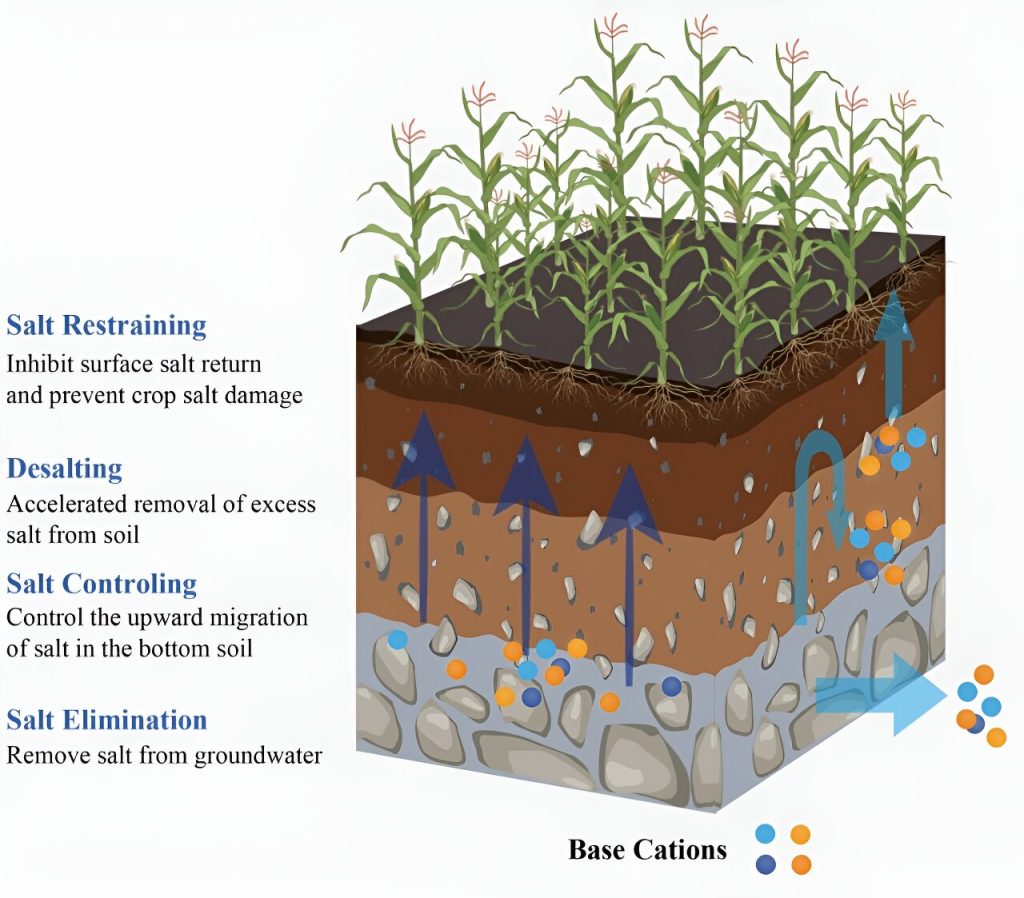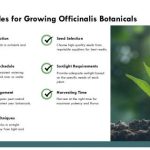Feeling frustrated with stubborn soil that just won’t cooperate? If you’re grappling with saline or alkaline soils, you’re not alone.
These challenging soil types can hinder plant growth and leave you questioning your gardening skills. But don’t worry, there’s hope! You’ll discover practical solutions to transform your garden from a barren landscape into a thriving paradise. Picture vibrant flowers and lush veggies flourishing right in your backyard.
By understanding the science behind these soils and implementing simple strategies, you can unlock your garden’s potential. Ready to turn your gardening struggles into success? Let’s dive in and explore how to manage saline or alkaline soils effectively!

Identifying Soil Types
Managing saline or alkaline soils requires careful attention to soil amendments and drainage. Improving soil structure and leaching salts can help restore balance. Regular testing and tailored fertilization ensure optimal plant growth in challenging conditions.
Identifying soil types is the first step in managing saline or alkaline soils effectively. Understanding what type of soil you have can help you choose the right treatments and amendments. This knowledge empowers you to make informed decisions and improve the health of your soil. ###Understanding Soil Texture
Soil texture refers to the proportions of sand, silt, and clay in your soil. You can perform a simple test at home by rubbing a small amount of moist soil between your fingers. Sandy soil feels gritty, clay soil is sticky, and silty soil feels smooth. ###Using The Jar Test
A fun and easy method to identify soil type is the jar test. Fill a clear jar two-thirds with water and add a handful of soil. Shake it well and let it settle. Within hours, you will see layers form: sand at the bottom, silt in the middle, and clay on top. ###Observing Plant Growth
Look at how plants grow in your garden. Poor growth or yellow leaves could indicate saline or alkaline conditions. If plants are struggling, consider testing your soil’s pH and salinity levels. ###Conducting A Soil Ph Test
Testing soil pH is crucial for identifying alkaline soils. You can purchase a soil pH test kit from a garden center. A pH above 7 indicates alkaline soil, which can limit nutrient availability to plants. ###Checking For Salt Crusts
Visible salt crusts on the soil surface are clear signs of saline soil. This crust forms when water evaporates, leaving salts behind. It’s important to address this issue to prevent further plant stress. ###Consulting Local Resources
Reach out to local agricultural extensions or soil experts for guidance. They can provide detailed soil analyses and specific advice for your region. This local insight can make a big difference in your soil management efforts. Identifying your soil type is more than just a scientific exercise—it’s a step toward healthier, more productive land. Have you tried any of these methods to identify your soil type? What results did you find? Engaging in these practices can unlock the potential of your garden, leading to flourishing plants and a vibrant ecosystem.Improving Soil Health
Improving soil health is crucial for managing saline or alkaline soils. Healthy soil enhances plant growth and increases resilience against environmental stressors. Saline and alkaline soils pose unique challenges, but with proper management, their productivity can be significantly improved.
Understanding Soil Composition
Saline soils contain high salt levels. Alkaline soils have high pH. Knowing the soil type helps in choosing the right treatment. Conducting soil tests can provide valuable insights into soil composition. This knowledge is the first step in improving soil health.
Incorporating Organic Matter
Organic matter improves soil structure and water retention. It enhances microbial activity, which aids nutrient availability. Compost and manure are excellent sources of organic matter. Regular application can help in reducing salinity and improving alkalinity.
Utilizing Gypsum
Gypsum is effective in treating saline soils. It helps in leaching excess salts and reducing soil compaction. Gypsum can improve soil permeability, making it easier for plants to absorb nutrients. Apply gypsum according to soil test recommendations for best results.
Implementing Crop Rotation
Crop rotation prevents soil depletion and reduces pest buildup. Different crops have varying nutrient needs, which can balance soil nutrients. This practice can enhance soil fertility over time, benefiting saline and alkaline soils.
Monitoring Irrigation Practices
Proper irrigation is vital for managing saline soils. Use water with low salt content. Overwatering can worsen soil conditions. Drip irrigation is recommended for better water management. Regular monitoring ensures soil remains healthy and productive.
Choosing Suitable Plants
Choosing suitable plants is crucial for managing saline or alkaline soils. Plants that tolerate these conditions can thrive and improve soil quality. Selecting the right species ensures a healthy garden, even in challenging environments.
Identify Salt-tolerant Plants
Some plants naturally resist salt stress. Look for species like barley, oats, and ryegrass. These crops can grow in saline conditions effectively. Consider grasses and shrubs adapted to salty environments.
Opt For Alkaline-resistant Species
Alkaline soils have high pH levels. Choose plants that thrive in these settings. Lavender, lilac, and honeysuckle are good options. These plants maintain health despite alkaline challenges.
Utilize Native Vegetation
Native plants adapt well to local soil conditions. They have natural resistance to salinity and alkalinity. Native species require less maintenance and support local ecosystems.
Consider Succulents And Cacti
Succulents and cacti tolerate dry, salty, and alkaline soils. Their thick leaves store water efficiently. This adaptation helps them survive in harsh environments. Use them for landscaping in affected areas.
Experiment With Cover Crops
Cover crops improve soil health. They reduce salinity and alkalinity over time. Try clover, alfalfa, or vetch. These plants enrich the soil, making it more fertile for other crops.

Long-term Soil Management
Managing saline or alkaline soils requires careful attention to soil composition. Enhance soil health by adding organic matter to improve drainage and reduce salt levels. Regularly test the soil pH and amend it with gypsum or sulfur to balance alkalinity.
Managing saline or alkaline soils can feel like an uphill battle. However, with effective long-term strategies, you can transform these challenging conditions into fertile grounds. The key lies in understanding your soil’s unique needs and consistently nurturing it for sustainable growth. ###1. Regular Soil Testing
Testing your soil regularly gives you a clear picture of its current condition. This practice helps in monitoring changes in salinity or alkalinity levels over time. By knowing the soil’s status, you can make informed decisions about amendments and treatments. ###2. Organic Matter Enrichment
Adding organic matter like compost or well-rotted manure can significantly improve soil structure. It enhances the soil’s ability to retain water and nutrients, making it less prone to salinity issues. Consider starting a compost pile to have a constant supply of organic matter. ###3. Efficient Irrigation Practices
Water management plays a crucial role in soil health. Opt for drip irrigation or soaker hoses to minimize water evaporation and salt accumulation. Ensure your irrigation system is working efficiently to avoid waterlogging, which can exacerbate salt problems. ###4. Choosing Salt-tolerant Plants
Select plants that naturally thrive in saline or alkaline conditions. Look for varieties specifically bred to withstand these soils. By planting salt-tolerant species, you not only ensure a robust garden but also reduce the stress on your soil. ###5. Implementing Crop Rotation
Rotate your crops to prevent the build-up of soil-borne diseases and improve soil fertility. Different plants have varying nutrient requirements, and rotating them helps balance soil nutrients. This practice supports healthier soil over the long term. ###6. Mulching For Moisture Retention
Mulch acts as a protective barrier, reducing evaporation and keeping the soil cooler. Use organic mulches such as straw or wood chips to enhance moisture retention. Mulching also adds organic matter to the soil as it breaks down. ###7. Gypsum Application
Gypsum can help displace sodium ions in saline soils, improving soil structure. Applying gypsum is a straightforward method to combat soil salinity. However, always test your soil first to determine the right quantity needed. Are you ready to tackle your saline or alkaline soil challenges with these strategies? Remember, consistent effort and patience are your best allies in creating a thriving garden.
Conclusion
Managing saline or alkaline soils requires patience and persistence. Start with soil testing to understand the problem. Amend the soil using gypsum or sulfur, depending on the issue. Regularly add organic matter to improve soil structure. Always choose salt-tolerant plants for better growth.
Consistent watering helps leach away excess salts. Mulching reduces water evaporation, maintaining soil moisture. Monitor progress and adjust your methods as needed. Over time, these practices can transform the soil. Achieving a healthy garden is possible with dedication. Happy gardening!


